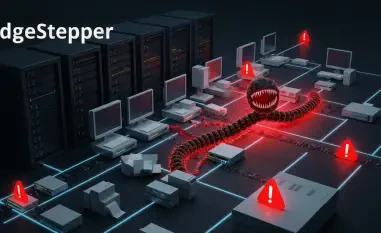In the ever-evolving cybersecurity landscape of 2025, a persistent and alarming vulnerability continues to undermine organizational defenses: the pervasive issue of weak passwords, which remains a critical threat to security. A comprehensive study conducted by Picus Security, detailed in the Blue Report 2025, sheds light on this serious concern through insights drawn from over 160 million attack simulations across global networks. The findings are not mere speculation but hard evidence of how fundamental security lapses are being exploited with startling success. Far from being a minor technical glitch, this vulnerability serves as a glaring reminder for businesses to reevaluate their approach to something as basic yet crucial as password protection. The stakes are immense, as attackers exploit these weaknesses to gain unauthorized access to sensitive data and critical systems, often with devastating consequences. This report’s revelations, grounded in real-world testing, demand urgent attention, pushing organizations to act before these gaps lead to irreparable damage.
Escalating Dangers of Password Cracking
The Blue Report 2025 delivers a sobering statistic: password cracking attempts achieved a success rate of 46% in tested environments, nearly doubling the figure from the prior year. This alarming trend highlights a profound failure in maintaining robust password practices across many organizations. Factors such as inadequate password policies, reliance on outdated storage techniques, and insufficient use of multi-factor authentication (MFA) contribute significantly to this vulnerability. Attackers are quick to exploit these weaknesses using brute-force tactics and other sophisticated methods, gaining entry into systems with relative ease. The report underscores that without immediate and decisive action to strengthen these defenses, the likelihood of breaches will only increase, putting companies at greater risk of data loss and operational disruption. Addressing this issue requires a renewed focus on fundamental security hygiene to close the gaps that attackers are so adept at targeting.
Equally concerning is the apparent complacency among many organizations despite years of warnings about password vulnerabilities. The Blue Report 2025 reveals that easily guessable passwords and outdated systems remain prevalent, creating fertile ground for cyber threats. This isn’t just a technical oversight but a cultural one, where the importance of strong password protocols is often underestimated until a breach occurs. The simulations conducted for the report show how quickly attackers can penetrate defenses when basic safeguards are neglected. Businesses must prioritize updating their security frameworks, ensuring that employees are educated on creating complex passwords and that systems are fortified against cracking attempts. Ignoring these persistent issues is no longer an option if organizations hope to safeguard their assets against the growing sophistication of cyber adversaries in today’s digital environment.
Credential Abuse as a Stealthy Menace
One of the most critical findings in the Blue Report 2025 is the near-universal success of credential abuse, with valid accounts being exploited at a staggering 98% rate in tested scenarios. Once attackers obtain legitimate credentials—often through password cracking or purchasing them from illicit brokers—they can infiltrate networks undetected, masquerading as authorized users. This enables them to navigate laterally within systems, escalate privileges, and access sensitive information without raising immediate alarms. The stealthy nature of these attacks poses a significant challenge to traditional security measures, which are often focused on external threats rather than internal compromises. As a result, organizations find themselves vulnerable to prolonged breaches that can cause extensive damage before detection. Tackling this menace requires a shift toward more robust identity protection strategies to prevent such devastating intrusions.
The prolonged dwell times associated with credential abuse further compound the threat, as attackers can remain within systems for extended periods, often undetected. The Blue Report 2025 highlights how these intruders use their time to quietly exfiltrate data or deploy malicious software, all while blending in with legitimate user activity. This ability to linger unnoticed underscores the inadequacy of perimeter-focused defenses against insider-like threats. Companies must invest in advanced detection mechanisms, such as behavioral analytics, to identify unusual patterns that could indicate compromised accounts. Additionally, monitoring outbound traffic for signs of data theft and implementing effective data loss prevention measures are essential steps to mitigate the impact of such attacks. Without these proactive efforts, the silent menace of credential abuse will continue to exploit organizational blind spots, leading to significant financial and reputational losses.
Systemic Shortcomings in Organizational Defenses
A deeper dive into the Blue Report 2025 reveals that many organizations are inadvertently facilitating cyber threats through their own systemic shortcomings. Weak password policies, particularly for internal accounts, stand out as a critical flaw, often leaving systems exposed to exploitation. Compounding this issue is the underinvestment in identity security and the lack of routine testing to validate defenses against real-world attack scenarios. While significant resources are allocated to cutting-edge technologies and perimeter protections, the foundational elements of cybersecurity are frequently overlooked. This imbalance creates a dangerous gap that attackers exploit with ease, as the report’s simulations starkly demonstrate. Addressing these vulnerabilities demands a fundamental shift in priorities to ensure that basic security practices are not sacrificed in the pursuit of more advanced solutions.
Moreover, the failure to regularly simulate and test defenses leaves organizations unaware of their true exposure to credential-based threats. The Blue Report 2025 emphasizes that without such proactive measures, businesses remain in the dark about weaknesses until an actual breach occurs, often with catastrophic results. This reactive approach to cybersecurity is unsustainable in an era where attackers are constantly evolving their tactics. Companies need to integrate regular attack simulations into their security protocols to identify and address gaps before they are exploited. Additionally, enforcing strict password policies and adopting MFA across all accounts can significantly reduce risks. The report’s findings serve as a critical reminder that neglecting these essential practices not only jeopardizes individual organizations but also undermines broader industry efforts to combat cybercrime effectively in the current digital age.
Path Forward: Strengthening Cybersecurity Foundations
Reflecting on the insights from the Blue Report 2025, it becomes evident that the battle against cyber threats hinges on addressing the pervasive issue of weak passwords and credential abuse. The simulations conducted across millions of scenarios paint a stark picture of vulnerability, with password cracking and valid account exploitation achieving disturbingly high success rates. These findings expose systemic failures in basic security practices, from lax password policies to inadequate focus on internal controls, leaving organizations exposed to stealthy and persistent attacks. However, actionable steps emerge from this analysis, offering a clear roadmap for improvement. Businesses are urged to enforce stringent password requirements, adopt MFA universally, and modernize credential storage methods. Regular validation through simulated attacks proves essential in uncovering hidden weaknesses, while behavioral detection and data loss prevention measures stand as critical tools in curbing the impact of breaches. By embracing these strategies, companies can fortify their defenses, significantly reducing the risk posed by some of the most exploited cyber vulnerabilities of the time.













